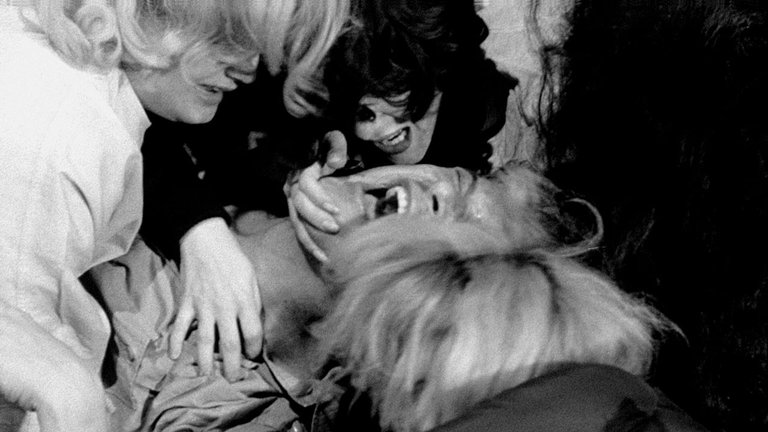
Samuel Fuller, a prominent figure in 1950s and 1960s Hollywood, like many of his contemporaries, faced the dual challenge of delivering exploitation content while simultaneously confronting his audience with uncomfortable truths about American society. This delicate balance often resulted in extraordinary cinema, and in the case of 1963 crime drama Shock Corridor, Fuller achieved a notable compromise. The film is frequently regarded as his most acclaimed work, earning a cult status that reflects its unique blend of sensationalism and social commentary.
Fuller not only directed but also wrote and produced Shock Corridor, drawing inspiration from an idea he had initially proposed to Fritz Lang in the late 1940s. The narrative centres on Johnny Barrett, portrayed by Peter Breck, an ambitious newspaper reporter hell-bent on winning a Pulitzer Prize by uncovering the truth behind the unsolved murder of Sloan, a patient at a mental institution. To gather information firsthand, Barrett devises a plan to feign mental illness and secure admission to the hospital. His editor, Swanson (played by Bill Zuckert), supports this risky endeavour, while psychiatrist Dr. Fong (played by Philip Ahn) coaches him on simulating symptoms. Barrett's girlfriend Cathy (played by Constance Towers), a stripper, reluctantly agrees to play along by posing as his sister and reporting him for alleged incest, thus facilitating his commitment. Once inside the hospital, Barrett encounters three key witnesses—Stuart (played by James Best), a Korean War veteran disgraced by supporting Communists after being brainwashed in captivity; Trent (played by Hari Rhodes), a black university student driven mad by racism; and Boden (played by Gene Evans), a nuclear physicist and builder of nuclear bombs who has regressed to a childlike state. As Barrett attempts to extract information from them about the murder, his own mental state begins to unravel.
Upon its release, Shock Corridor presented an unusual premise: a newspaper reporter feigning insanity to uncover a story. This concept may have seemed outrageous at the time; however, it would likely have resonated more with audiences in the following decade when the Watergate scandal elevated journalists to heroic status for their willingness to risk everything for the truth. The film's exploration of this theme was ahead of its time and perhaps too provocative for mainstream acceptance in 1963.
Fuller’s approach complements the film’s bizarre premise with an initial tone that leans towards dark comedy rather than serious drama. This is exemplified in scenes designed as what went for the fan service for early 1960s Hollywood audiences, such as Cathy’s striptease performance at a nightclub and her subsequent appearance in Barrett's dreams wearing the same costume. The film also indulges in exploitative content related to sexuality; one notable scene features female patients referred to as "Nymphos" who violently assault Barrett after he inadvertently wanders into their ward, suggesting attempted rape.
Despite these exploitative elements, Shock Corridor reveals Fuller’s genuine concern for pressing societal issues that plagued America during the early 1960s. Each of the three patients Barrett interrogates embodies significant themes: Stuart represents militarism and its psychological toll; Trent illustrates the destructive nature of racism; and Boden symbolises the existential dread surrounding nuclear annihilation amid Cold War tensions. These characters serve as poignant reminders of the era's social challenges.
While the symbolism associated with these characters may come across as overly explicit, it functions effectively within the film’s context. The central mystery surrounding Sloan's murder is somewhat weak and resolves in an anti-climactic manner despite Fuller attempting to heighten tension through a melodramatic confrontation between Barrett and the killer.
The narrative shortcomings are compensated by Fuller’s masterful direction and Stanley Cortez's striking black-and-white cinematography. Paul Dunlap’s score adds depth to the film’s atmosphere, but it is ultimately the performances that elevate Shock Corridor. Peter Breck delivers an intense portrayal of Barrett as he descends into madness, capturing both ambition and desperation. Constance Towers excels in her role, which some may deem thankless; however, her performance adds emotional weight to Barrett’s journey. The portrayals of Best, Rhodes, and Evans as Barrett's witnesses are particularly noteworthy, showcasing their ability to convey complex psychological states. Larry Tucker, producer and part-time actor, provides comic relief as Pagliacci, an opera-obsessed patient who adds levity amidst the film's darker themes.
Though Shock Corridor may not be universally hailed as a classic, it stands as an exemplary piece of 1960s cinema that offers contemporary audiences valuable insights into how rapidly changing societal dynamics influenced Hollywood filmmaking during this transformative period. Fuller's unique blend of exploitation and social critique invites viewers to reflect on both personal and collective responsibilities regarding societal issues.
RATING: 7/10 (+++)
Blog in Croatian https://draxblog.com
Blog in English https://draxreview.wordpress.com/
InLeo blog https://inleo.io/@drax.leo
Hiveonboard: https://hiveonboard.com?ref=drax
InLeo: https://inleo.io/signup?referral=drax.leo
Rising Star game: https://www.risingstargame.com?referrer=drax
1Inch: https://1inch.exchange/#/r/0x83823d8CCB74F828148258BB4457642124b1328e
BTC donations: 1EWxiMiP6iiG9rger3NuUSd6HByaxQWafG
ETH donations: 0xB305F144323b99e6f8b1d66f5D7DE78B498C32A7
BCH donations: qpvxw0jax79lhmvlgcldkzpqanf03r9cjv8y6gtmk9